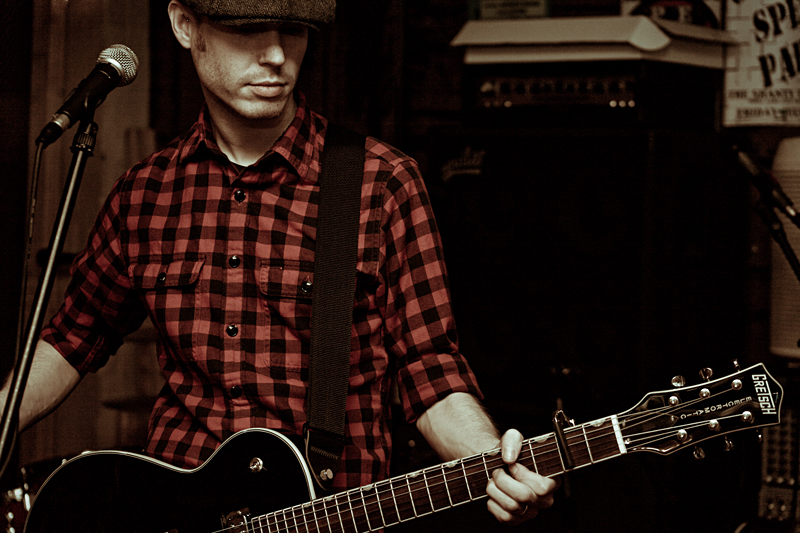Like sharks to the smell of blood they come, some with wallets full of money. Underwater, they also come: Pacific octopi, wolf eels, anemones, and thousands of other species. Their destinations, sea creature and scuba diver alike, are artificial reefs made from intentionally sunken ships located in the Florida Keys, Vancouver Island, the Cayman Islands, the Gulf of Mexico, and other world-class dive destinations.
A movement is under way to bring more of these soggy attractions to Seattle-area waters, but the sailing has been far from smooth. Advocates are facing a wave of problems ranging from funding hang-ups to environmental concerns. Meanwhile, Washington divers are taking their breathing tanks across the border to British Columbia, one of the global leaders in purposeful ship scuttling.
“My observation is the state seems to be nonconducive for sinking vessels in Puget Sound,” says Leon Scamahorn, who runs a specialty dive equipment store in Centralia. “The state has, in the past, dumped rubble for fish habitat. I can’t understand why they don’t sink vessels. Florida is sinking vessels left and right.”
Though several ships have accidentally sunk deep in Puget Sound, intentionally sinking them in favorable locations has long been a goal for many Washington divers. This push took its first step toward fruition late last year when, thanks to the cajoling of Washington State Scuba Alliance President Mike Racine, state Sen. Phil Rockefeller, D–Kitsap County, co-sponsored a bill asking the Washington Department of Fish and Wildlife (WDFW) to assess the feasibility of sinking a mothballed ship with hopes of spurring dive tourism in the state. What resulted was $50,000 in state funds made available for a “scoping study,” to determine how much a “feasibility study” would cost.
Findings from the scoping study, submitted at the end of January, concluded it would cost the state anywhere from $1.2 million to $2.8 million just to determine whether this was a notion with which Washington should proceed. It has also become apparent that skeptics wary of environmental pitfalls, ranging from PCBs (an unseemly chemical in a ship’s insulation and wiring) to potentially adverse impacts on the fragile Puget Sound ecosystem, abound.
To this end, Greg Bargmann, a marine ecosystems manager with the WDFW who has worked closely with the project, says, “One of the real problems that we have is that water doesn’t exchange very much in Puget Sound. You place a ship off Seattle or Tacoma, water stays in the area for one or two weeks. It’s much less in the Strait of Georgia [in B.C.]. The potential for accumulation of contaminants is greater here than it would be there.”
But scientists and reef advocates from Florida and British Columbia, two of the leaders in intentionally sunken ships, are wondering what all the fuss is about. Florida already has nearly 275 mothballed ships in the water, and plans for another, the 520-foot U.S.S. Hoyt Vandenberg, to be sunk in a national marine sanctuary, one of the most strictly regulated underwater locales on the planet. The area around Vancouver Island, B.C., is a distant second, with a handful of ships sunk since the early ’90s, along with a Boeing 737 submerged off the coast of Nanaimo.
“I’ve considered myself an environmentalist for 30 years,” says Tom Maher, formerly of the Florida Department of Fish and Wildlife and now the president of Marine Habitats Inc., a Florida company that sinks vessels. “I’m not a proponent of harming the environment. I wouldn’t be involved if I personally thought [sinking ships] was a negative thing to do for the environment. If the ships are properly prepared, I think it’s one of the best things we can do.
“People in Florida and [on] the East Coast cannot fathom why there’s such a reluctance to put these ships down when we all know they provide a tremendous fish habitat,” he adds. “Dollar for dollar, it’s probably the most effective fish habitat you could do.”
Wes Roots, who’s in charge of ship operations at Canadian Reef Consulting Inc., claims to have overseen every artificial reef project on the West Coast since 1994. He disagrees with Bargmann’s claim that because Puget Sound is a closed body of water, it requires heightened regulation. “That may be a fisheries concern,” says Roots, “but the ships are extremely well cleaned and prepared. All hazardous materials are removed. They’re inspected by all agencies top to bottom with a microscope. We’ve had similar arguments with nongovernment organizations in the Georgia Strait, but you look at it and reefs are a hot spot in terms of biological diversity and volume. There’s more diversity on ships than any of the surrounding areas.”
Perhaps most puzzling about the $1 million–plus price tag attached to WDFW’s feasibility study is the fact that much of the research for which the report calls has already been done. The Environmental Protection Agency, partnering with the U.S. Maritime Administration, U.S. Fish and Wildlife, the Coast Guard, and others, standardized regulations for sinking ships last year in a 75-page report that addressed every conceivable concern. And in 2004, while assessing whether to sink the U.S.S. Oriskany—which had PCB levels exceeding EPA standards—in Florida, the U.S. Navy did a study of ships accidentally sunk off the coast of South Carolina that were “laden with PCBs” and found the effects to be negligible.
Bargmann, however, voices numerous concerns with sinking ships: liability issues, asbestos, lead-based paint, damage to the sea floor and the species that inhabit it, and lack of suitable open space on the bottom of Puget Sound. He’s also dubious about PCBs, an organic compound used as a flame retardant that can potentially cause liver damage and anemia in humans and animals alike.
“The real concerns are contamination issues and local biological effects,” Bargmann says.
But beyond the perceived environmental pros and cons, one nearly universally accepted theory stands: Sinking ships in Puget Sound would provide a huge boost in terms of tourism dollars.
In 2004, Canadian researchers from Simon Fraser University found that diving was a $12.4 million dollar industry in British Columbia, with $4.3 million of that coming from tourists—including 10 percent from the Pacific Northwest. And the WDFW scoping study noted that previous looks at Florida’s scuba industry found nonresident divers spent upwards of $200 per day when visiting.
Maher, who conducted a similar study assessing the economic impact of sunken ships in Florida, says, “I’d love to see Washington compete with British Columbia in terms of putting ships down because the Canadians are getting all the [tourism] money.”
Describing the allure of wreck diving, Scamahorn says, “The diving is phenomenal. If you’ve spent time on wrecks, you can’t get enough of it. In less than five years, it’s packed full of marine life. Anemones, fish, everything—it’s very cool to look at. When you see a wreck on the bottom, it’s photographic. You can swim through the bowels of the ship, through the hatches, down the stairs.”
But at the moment, Washington’s project is virtually dead in the water. With the scoping study complete and its $1.2 million minimum recommendation tallied, Sen. Rockefeller says no new state funds will go toward the project in the foreseeable future.
“There is no money for feasibility studies at this point,” Rockefeller says. “I’ve not made any requests for this. I don’t see much point in going forward with a full study when we’re not sure that this is an environmentally safe thing to do. We need to get answers to environmental questions.”
But according to Maher, contamination is a moot point if ships are prepped according to procedure. “Theoretically, there shouldn’t be any contaminants on the vessel when they’re sunk,” he says. “That’s why they cost so much to clean and put down in the first place.”
Both Racine and Rockefeller hope WDFW will incrementally tackle environmental concerns associated with the request. “The senator asks [that] we bite off chunks of it, in $100,000 to $200,000 increments, to look at biological or chemical contamination issues,” says Racine. “If, after that, we can’t address those [issues] adequately, we won’t proceed.”
When asked when he expects to see his ultimate goal of a newly sunken ship on the floor of Puget Sound, Racine replies, “I’m not holding my breath.”






